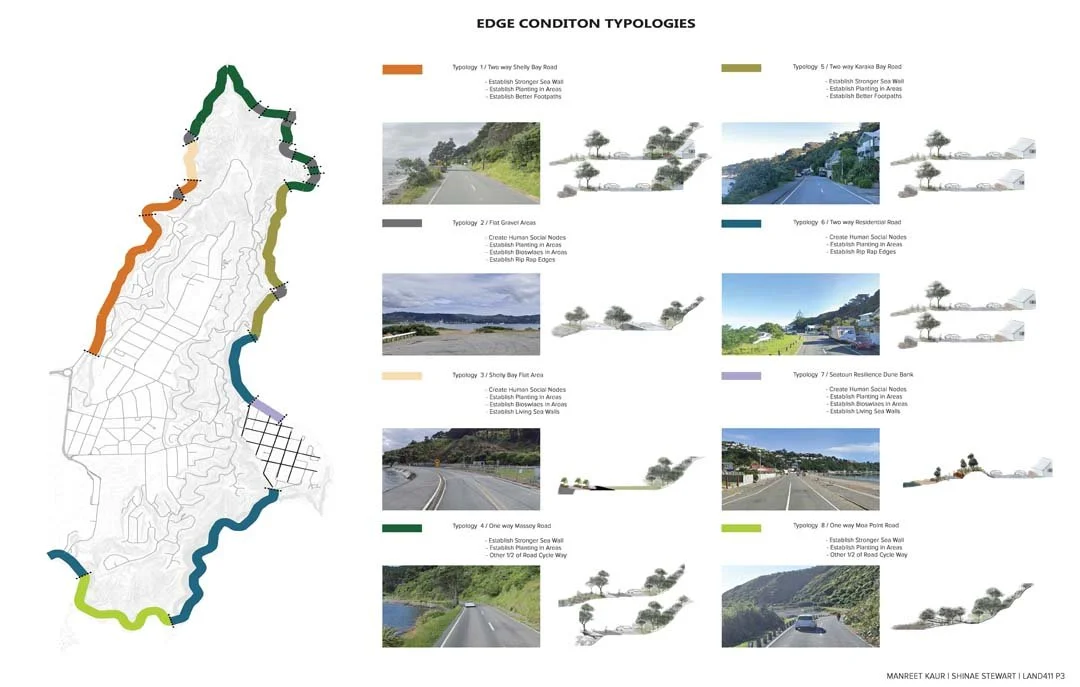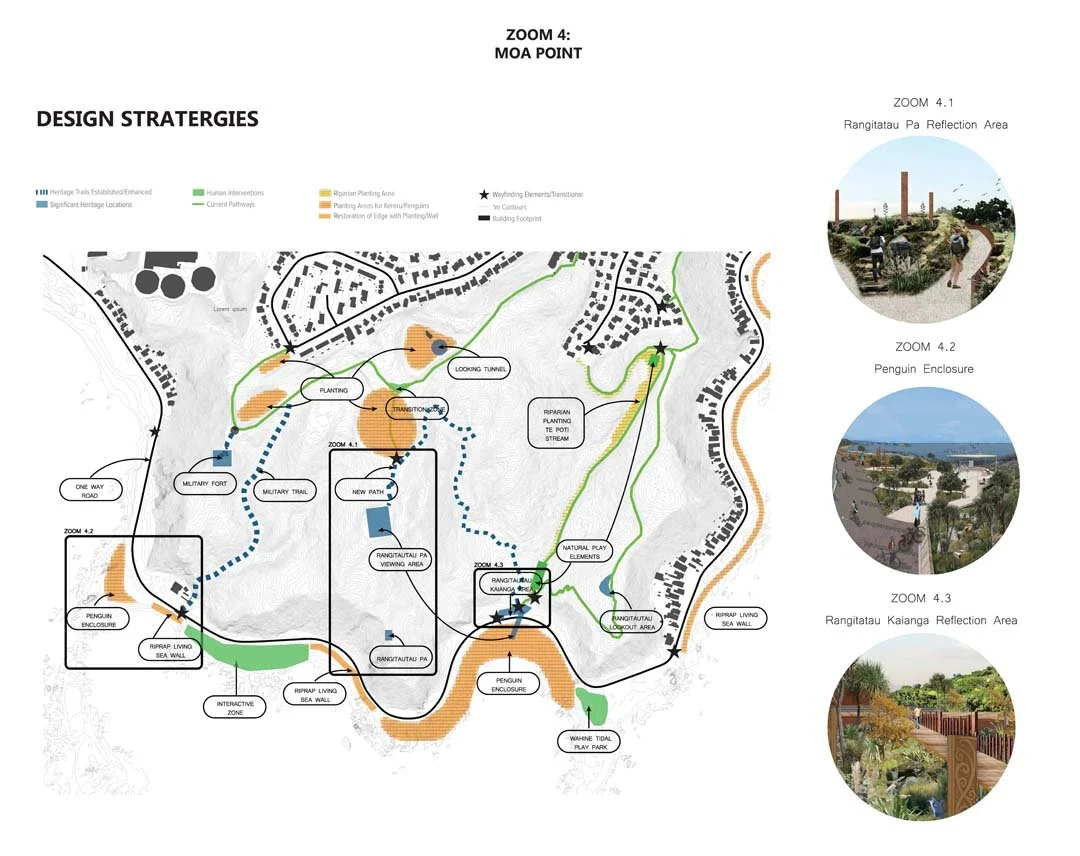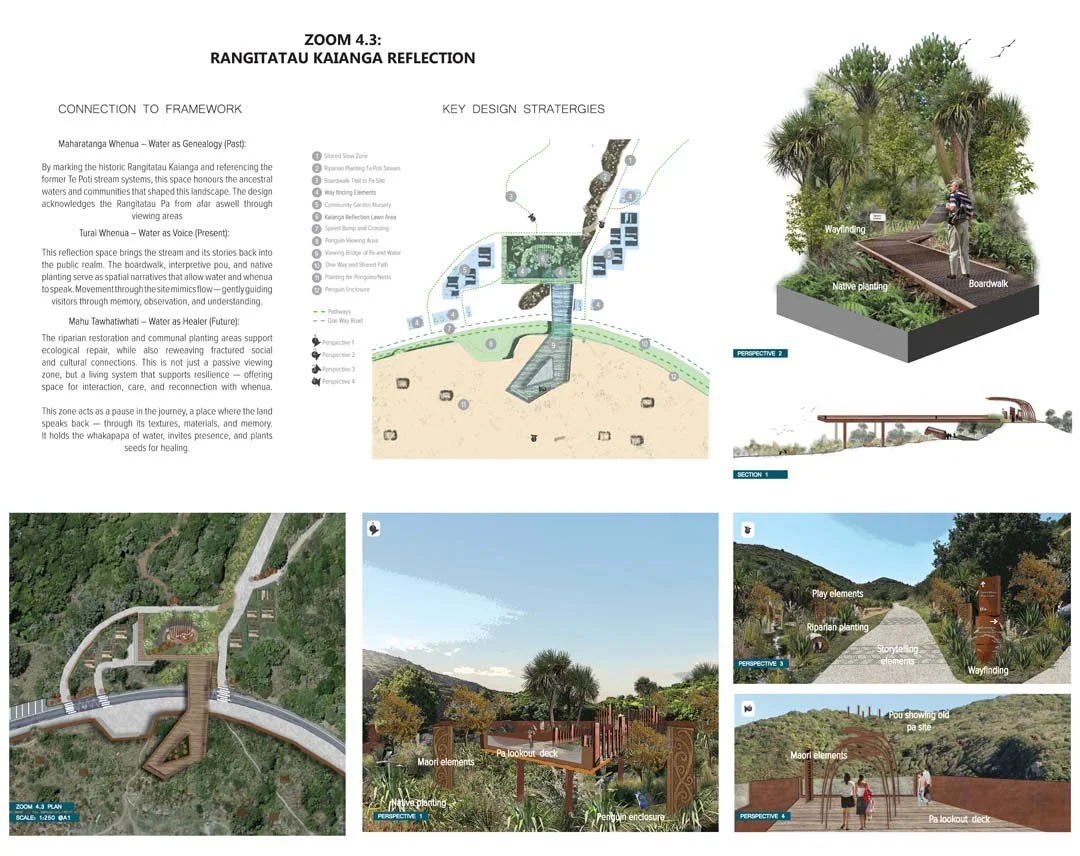
Miramar: Motutere e Manatu
Past - Present - Future as one
Manreet Kaur & Shinae Stewart (Group 04)
This project, "Miramar: Motutere e Manatu" (The Island That Remembers), focuses on a visionary landscape design that uses water as the central thread connecting Miramar's past, present, and future. The project acknowledges that Miramar was once Motu Kairangi, an island before land uplift connected it to Wellington's mainland. Overall seeking to awaken the area's fragmented cultural and ecological memories.
The design framework positions water in three temporal roles: as genealogy (past), voice (present), and healer (future). By tracing ancestral waters that once flowed through wetlands, lagoons, and streams, the project aims to reveal buried histories and honour the Māori communities and their relationships with this land. Rather than masking these lost waterways, the design exposes, restores, and reveals them, allowing water to carve new pathways that reflect the relationship between historical memory and contemporary needs.
The interventions include cultural heritage, ecological restoration, and climate resilience strategies. Key features include ancestral lake and stream restoration, pā and kāinga appreciation areas with interpretive trails, penguin habitat restoration, living shorelines, and educational play spaces that teach tidal dynamics. The project emphasises bicultural naming practices and creates reflection areas that foster respect for Māori and European heritage while supporting native species like kererū and kororā (little blue penguins).
Central to the vision is healing fractured hydrological and social systems through ecological repair and cultural renewal. The design creates a resilient future by restoring water's rightful place in the landscape, absorbing environmental shocks while supporting life and reconnecting communities to whenua (land). Through bioswales, elevated walkways, living breakwaters, sand dunes and ferry connections, the project demonstrates how water can become the storyteller that reveals, educates, and ultimately heals the relationship between people and place, weaving past wisdom into future resilience.













